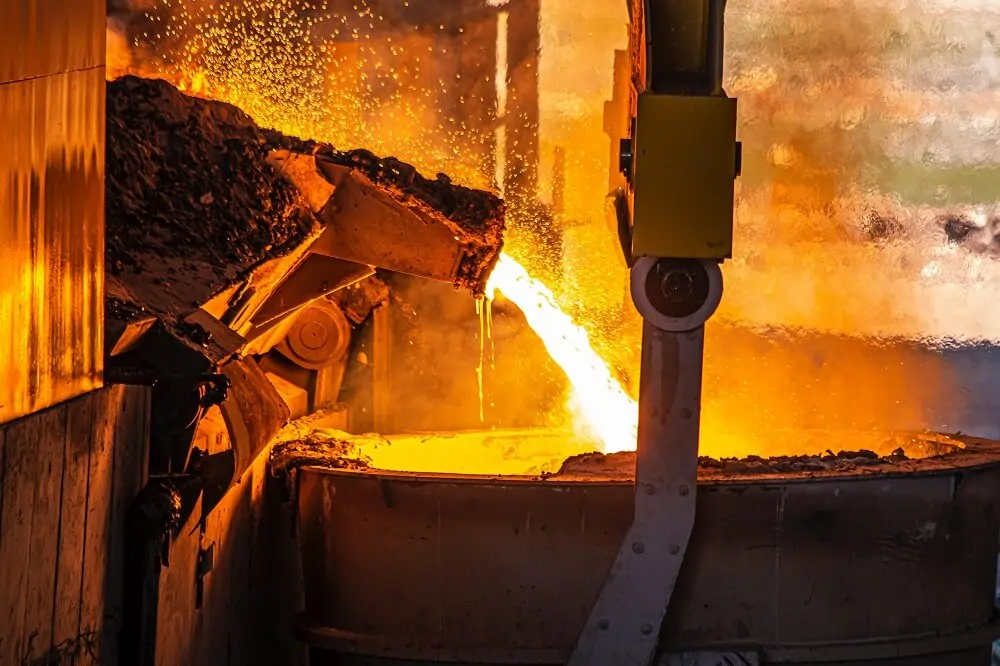Introduction
In the world of high-temperature industrial applications, refractory materials play a pivotal role. These materials must withstand extreme conditions, including intense heat, corrosion, and mechanical wear. Fused alumina, a synthetic form of aluminum oxide, is one of the most effective materials used to enhance the performance of refractory products. Its unique properties significantly improve the durability and efficiency of refractories, making it indispensable in industries such as steel, glass, and cement. This article explores how fused alumina enhances refractory materials and why it is a critical component in modern industrial processes.
What is Fused Alumina?
Fused alumina is a high-purity material produced by melting calcined alumina in an electric arc furnace. The process involves heating the material to temperatures exceeding 2,000°C, which results in the formation of large, crystalline aluminum oxide grains. These grains are known for their exceptional hardness, chemical stability, and thermal resistance. Available in different varieties, including white and brown fused alumina, each type offers distinct benefits depending on the application. Regardless of the specific form, fused alumina remains one of the hardest and most thermally stable materials used in refractory products.
Thermal Stability and Heat Resistance
One of the most valuable properties of fused alumina is its remarkable thermal stability. Refractories are often exposed to temperatures that exceed 1,500°C, and maintaining structural integrity under such conditions is essential. Fused alumina enhances the heat resistance of refractory materials, enabling them to withstand extreme thermal environments without deforming or breaking down. Its high melting point (around 2,050°C) ensures that it remains solid and effective in high-temperature processes, making it ideal for applications such as lining furnaces, kilns, and reactors.
Hardness and Wear Resistance
In industrial settings, refractories are frequently subjected to abrasive conditions that cause wear and tear over time. The hardness of fused alumina, which ranks 9 on the Mohs hardness scale, ensures that it can resist mechanical wear and erosion far better than many other materials. This property is particularly important in applications like steelmaking, where molten metal and slag constantly come into contact with refractory linings. By incorporating fused alumina into refractory products, manufacturers can significantly extend the lifespan of these materials, reducing the need for frequent replacements and minimizing downtime.
Chemical Inertness
Fused alumina’s chemical inertness is another crucial factor that enhances refractory performance. In industries where refractories are exposed to corrosive gases, molten metals, and aggressive chemicals, maintaining material stability is critical. Fused alumina is highly resistant to chemical attack, even in the presence of strong acids and alkalis. This resistance prevents the material from reacting with the substances it encounters, thereby preserving the integrity of the refractory lining and ensuring the continued efficiency of the industrial process.
High-Performance Applications in the Steel Industry
The steel industry is one of the largest consumers of fused alumina-based refractories. In steel production, refractories must withstand both high temperatures and corrosive environments, making the choice of materials vital to the efficiency and safety of the process. Fused alumina is commonly used in the linings of ladles, tundishes, and blast furnaces due to its ability to resist thermal shock and erosion from molten steel and slag. By enhancing the durability and performance of refractories, fused alumina helps ensure continuous, high-quality steel production.
Use in Glass Manufacturing
In the glass manufacturing industry, the use of refractories is essential for the melting and shaping of glass. Glass furnaces operate at extremely high temperatures and are exposed to highly corrosive molten glass. Fused alumina's exceptional thermal and chemical resistance makes it an ideal material for refractory linings in these furnaces. Its ability to withstand the harsh conditions inside glass furnaces ensures a longer service life for the refractory materials, reducing the frequency of maintenance and repairs while maintaining product quality.
Benefits in Cement Kilns
Cement production involves the use of rotary kilns, which operate at temperatures above 1,400°C. These kilns require refractories that can handle both the intense heat and the chemical reactions involved in the cement-making process. Fused alumina is used in the refractory linings of these kilns to improve their heat resistance and durability. The incorporation of fused alumina helps to prevent the formation of clinker rings and other obstructions, ensuring a more efficient and continuous operation. The result is higher production efficiency and reduced energy consumption, both of which are crucial in the highly competitive cement industry.
Environmental Considerations
As industries increasingly prioritize sustainability, fused alumina-based refractories offer several environmental advantages. Their enhanced durability means that refractories last longer, reducing the frequency of replacements and the associated material waste. Additionally, the high efficiency of fused alumina refractories can lead to lower energy consumption in high-temperature processes, further contributing to sustainability efforts. By extending the service life of refractory materials and improving process efficiency, fused alumina helps industries meet their environmental goals while maintaining high performance.
Innovations in Fused Alumina Refractories
The refractory industry continues to evolve, and innovations in fused alumina technology are driving improvements in performance and sustainability. One area of innovation is the development of advanced bonding techniques, which enhance the mechanical strength of fused alumina refractories. These advancements result in materials that can withstand even greater thermal and mechanical stresses. Additionally, researchers are exploring the use of fused alumina in hybrid materials, combining it with other refractory substances to create products that offer both improved performance and cost-effectiveness.
Conclusion
Fused alumina plays an indispensable role in enhancing the performance of refractory materials across a wide range of industries. Its exceptional thermal stability, hardness, chemical resistance, and durability make it a key component in high-temperature processes where reliability is critical. From steel production to glass manufacturing and cement kilns, fused alumina’s ability to extend the lifespan and improve the efficiency of refractory materials ensures its continued importance in modern industrial applications. As innovations continue to push the boundaries of refractory technology, fused alumina will remain at the forefront of these advancements.
